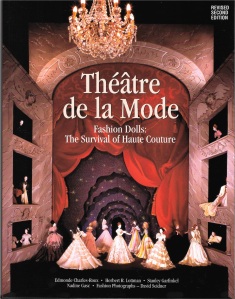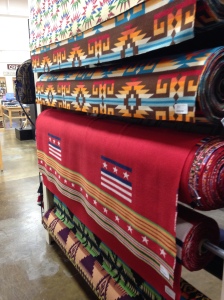Two years ago I made this dress:
From this pattern:
Once I had the dress finished, I liked it so much that I decided a coordinating coat, with a lining to match the dress would be wonderful – sometime. I even went so far as to order more of the blue silk blend fabric from EmmaOneSock, while I knew it would still be available. Tucked away in my fabric closet, it has patiently waited while I searched and searched for the right coat fabric in a coordinating/contrasting color and in silk. I finally found it last Spring, during a online silk sale at Britex Fabrics in San Francisco.
The fabric is lightweight silk taffeta, with the weft in persimmon color and the warp in fuchsia pink, giving it a shimmer which changes color with movement. I decided it would be my first project after we returned from our summer travels – with the intention of having it ready to wear with the dress to a September wedding, which happens to be at a location where a light coat or wrap is advisable.
All along I had intended to use the Jo Mattli coat pattern that is shown with the dress. I liked the idea of no buttons and simple lines.
However, when I got the pattern pieces out, here is what I found:
Yep, that is one voluminous coat! I knew that, even with taking some of the bulk out, I would probably still look like I was wearing a tent. With that slim dress, I am not sure why the coat has to be so full, but I had no qualms about deciding not to go in that direction. However, I still wanted a coat with no buttons or maybe just one button. I dug through my collection and came up with several possibilities, which included this one:
I have another Jo Mattli coat and dress design which I love, but I think the coat would make up much more attractively in wool rather than silk taffeta, so I ruled this one out:
Then I came across this one: View B shows it with no button/buttonholes down the front. I also like the three-quarter sleeves, with the cuff detail.

The pattern description reads: “Straight coat with or without buttoned closing below notched collar. Long and below elbow length sleeves with button trimmed vent. Optional pocket in side. Slim skirt.” I knew this coat would take on an appropriate dressy look when made up in silk taffeta.
Now – I try to buy vintage Vogue patterns in sizes with a 32” bust and 34” hip measurement; however, that is not always possible, so I will go up or down a size if it is a pattern I really want to have. When I make my muslin (toile) for such a pattern, I try to include adjustments for the size issues so that my final alterations will be easier. However, the handwritten note on the front of this pattern gave me pause: “too scimpy” it reads. She obviously meant “skimpy,” but those two words spoke volumes to me (no pun intended!) Maybe I would just follow the pattern exactly (except for lowering the bust which I always have to do), and see if the size is okay.
And that is exactly what happened! Little did Mrs. “Scimpy” know that her simple pattern review, circa 1961, would save me both time and effort in 2016!
It looks like Mrs. Scimpy made her coat out of red wool, with a matching skirt. Her pencil notes on the yardage required indicate such, along with the cost of the fabrics: $22. I certainly hope she figured out that the coat was too skimpy in time to make adjustments, as a red wool coat with matching skirt would be lovely indeed!








































